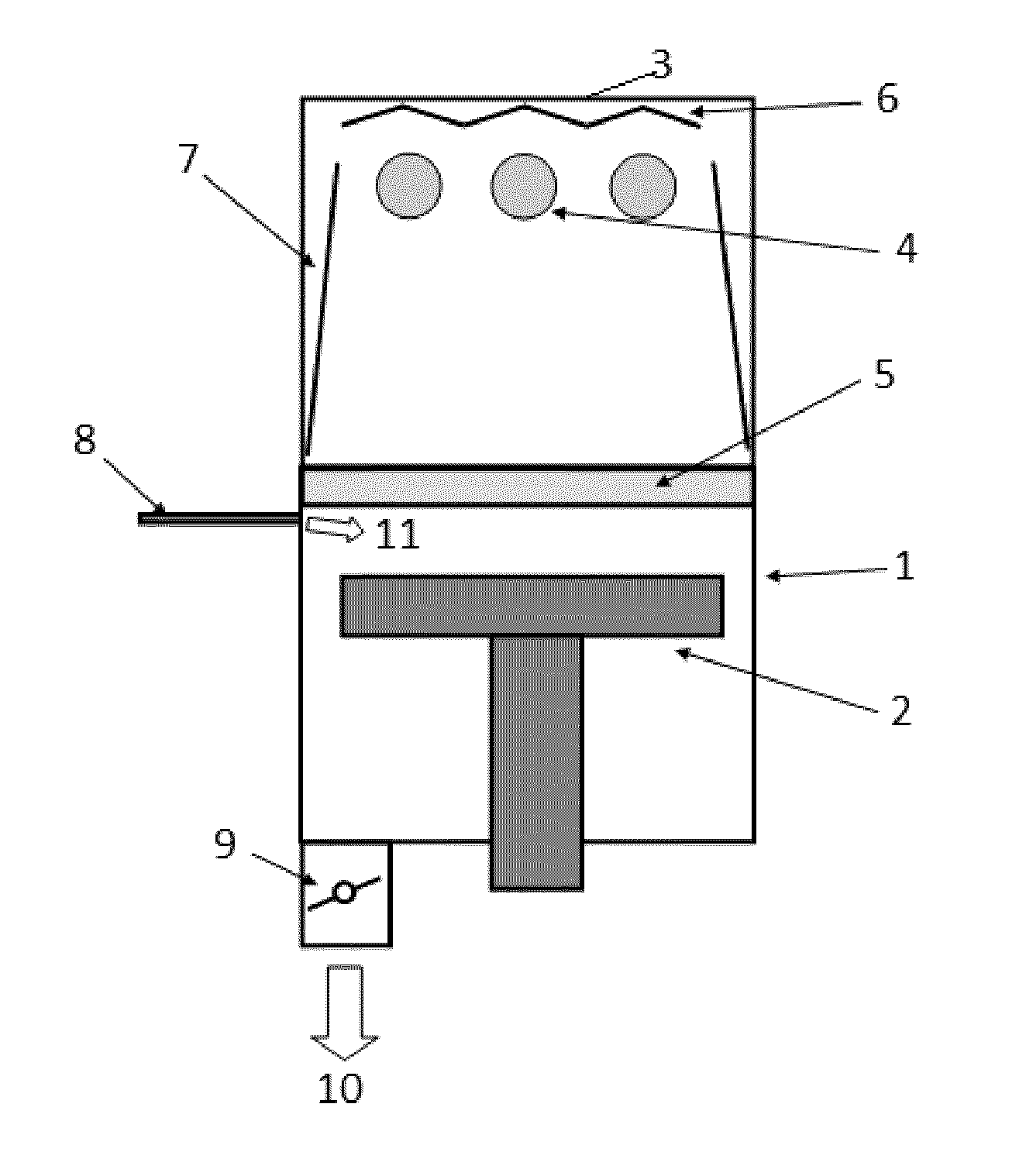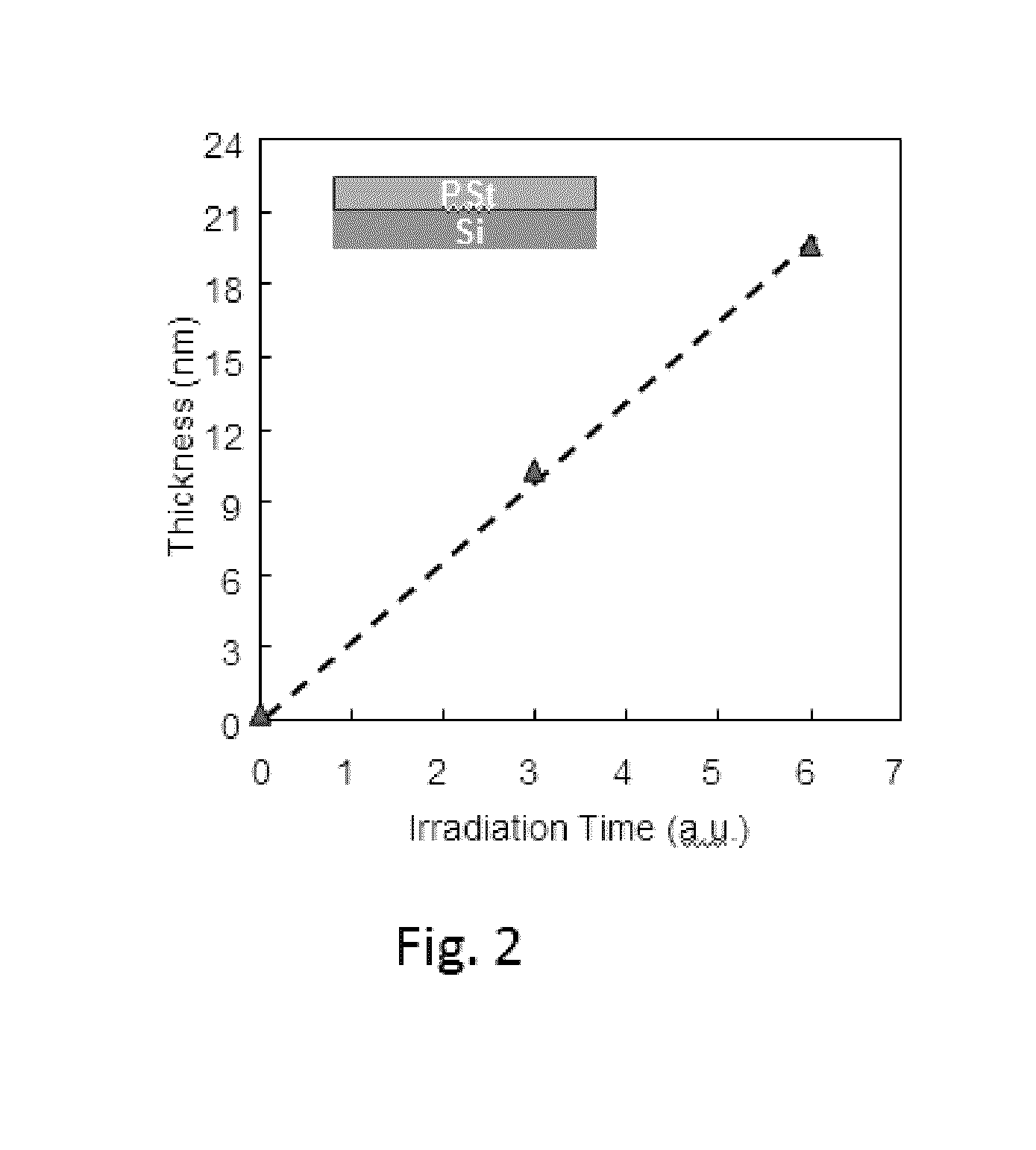Method for Sealing Pores at Surface of Dielectric Layer by UV Light-Assisted CVD
a dielectric layer and light-assisted technology, applied in the direction of liquid surface applicators, pretreated surfaces, coatings, etc., can solve the problems of difficult control of film thickness to a range of 1 to several nm, poor coverage of height gaps, and rise in dielectric constant, etc., to achieve excellent controllability of film thickness, poor coverage of height gaps, and low throughput
- Summary
- Abstract
- Description
- Claims
- Application Information
AI Technical Summary
Benefits of technology
Problems solved by technology
Method used
Image
Examples
example 1
In this example, the apparatus shown in the schematic diagram of FIG. 1 was used to form a film.
As shown in FIG. 1, the UV irradiation apparatus used in this example comprises a UV lamp unit 3, UV irradiation window 5, vacuum reactor 1, heater table 2, process gas inlet tube 8, process gas inlet port 11, vacuum pump 10, and pressure control valve 9. The UV lamp unit 3 has UV mirrors 6, 7 for efficient irradiation of UV light. Note that multiple process gas inlet ports may be provided at roughly an equal pitch along the inner periphery walls of the reactor to allow gas to be introduced toward the center from the inner periphery walls of the reactor.
Note that the present invention is not at all limited to the apparatus shown in this figure and any other apparatus can be used so long as it can irradiate UV light. The apparatus shown comprises a chamber that can be controlled to pressures from vacuum to around atmospheric pressure, and a UV irradiation unit provided on top of the chambe...
example 2
According to the procedures and conditions used in Example 1, substrates having a porous layer (ELK film) were prepared, on which the following treatments were conducted, respectively:
The ELK film was exposed to an oxygen plasma for 20 sec, which was generated by an RF power (13.56 MHz, 50 W) applied to oxygen-supplying gas (O2, 7 sccm) at a temperature of 250° C. at a pressure of 3.5 Torr.
2) Uv Restoration:
According to the procedures and conditions used in Example 1, the oxygen plasma treated ELK film obtained in 1) was subjected to UV restoration treatment where the temperature of the heating table was 300° C., the pressure was 10 Ton, nitrogen gas (500 sccm) and hydrocarbon gas (butadiene, 90 sccm) were introduced, and the substrate was irradiated with UV light for 4 minutes.
3) Thermal Annealing:
The oxygen plasma treated ELK film obtained in 1) was annealed at a temperature of 300° C. for five minutes in an atmosphere of nitrogen at a pressure of 5 Torr...
PUM
| Property | Measurement | Unit |
|---|---|---|
| depth | aaaaa | aaaaa |
| thickness | aaaaa | aaaaa |
| wavelength | aaaaa | aaaaa |
Abstract
Description
Claims
Application Information
 Login to View More
Login to View More - R&D
- Intellectual Property
- Life Sciences
- Materials
- Tech Scout
- Unparalleled Data Quality
- Higher Quality Content
- 60% Fewer Hallucinations
Browse by: Latest US Patents, China's latest patents, Technical Efficacy Thesaurus, Application Domain, Technology Topic, Popular Technical Reports.
© 2025 PatSnap. All rights reserved.Legal|Privacy policy|Modern Slavery Act Transparency Statement|Sitemap|About US| Contact US: help@patsnap.com



